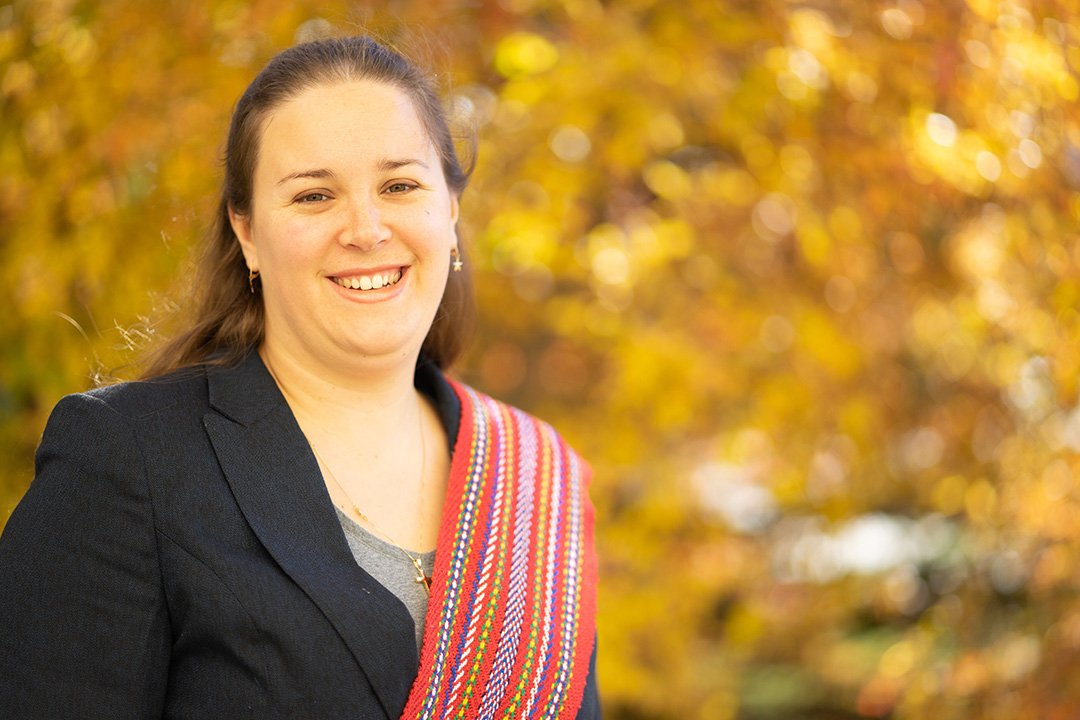
USask researcher and Métis partners collaborate to jig away cardiac woes
SASKATOON – In a first-of-its-kind Canadian study, University of Saskatchewan (USask) researcher Heather Foulds will assess the physical, mental, cultural, and social benefits that result from performing traditional Métis social dances—something she says can narrow the health gap between Métis and non-Indigenous people.
By USask Research Profile and Impact“Assessing the value of cultural-based programs to improving health is timely, given growing Métis population and the formidable health disparities,” said Foulds, a kinesiology assistant professor who holds the Indigenous Early Career Women’s Heart and Brain Chair.
“Métis dancing is a culturally safe, Indigenous-led initiative that includes storytelling, spirituality, and community awareness. It can buffer the effects of colonization that have eroded Métis identity as a distinct nation in Canada with a unique history, culture and language.”
Anyone who has seen the vigorous and up-tempo footwork involved in performing the Red River Jig and Orange Blossom Special—dancers can rack up 10,000 steps in a 30-minute class—has no doubt about the cardiovascular benefits.
Funded by the Canadian Institutes for Health Research (CIHR), the five-year, $1.07-million project takes a wholistic perspective on the contribution of Métis dancing to health and well-being by looking beyond the aerobic exercise benefits that help reduce cardiovascular disease (CVD) risk.
“Dancing also engages cognition, control of body movements, and feelings of social inclusion and engagement—fundamental factors that contribute to better mental health and well-being,” she said.
About one-third of the CIHR award will be spent on hiring and training three graduate students and two post-doctoral fellows. Foulds plans to begin the project when she returns to work from maternity leave in May, providing that the pandemic has waned.
The project builds on a three-year study that Foulds began last year on the exercise intensity and training effectiveness of the Red River Jig.
Her new study brings together both recreational and professional dancers over age 18 from the Saskatoon area to perform traditional Métis square dances—ranging from the slow Snake in the Grass, to the medium-paced Lady Round Lady, to the faster Old Wagon Wheel, followed by social dances such as the Schottische, and ending with the up-tempo Orange Blossom Special that allows dancers to showcase their speed, agility and fitness.
The team will:
- Assess cardiovascular fitness demands, physical activity (step count), and mental wellness benefits
- Evaluate participation and its meaningfulness to health
- Assess the effectiveness in improving CVD risk factors and perceived health to the individual, family and community.
Improvement in CVD risk factors, both for recreational dancers and professional ones, will be assessed through three-month dance programs that will take place in the local Métis community and at the College of Kinesiology.
Recreational dancers, recruited through the project’s community partner, Li Toneur Niimiyitookh Métis Dance Group, will be assessed with standardized fitness tests before they begin three months of dance lessons, and upon completion of the course. There will be multiple rounds of the three-month courses, with different amateur participants over the five years.
The professional dancers who participate are members of the other community partner in the study, Qu’Appelle Valley Dancers.
Aerobic exercise intensity of the 12 dances chosen for study will be tested by measuring step counts and heart rates of the dancers at community “kitchen dances” and at professional performances. Interviews with all dancers, based on standardized questionnaires, will be used to assess mental health benefits.
Both recreational and professional dancers will undergo a comprehensive assessment pre- and post-program, including physical and psychological evaluations, as well as their social supports and cultural connectedness.
To assess the prevalence of Métis dancing today compared to the past and learn if there’s a resurgence in dance, interviews will be undertaken with 16 key Métis community members, Elders and knowledge keepers, along with in-depth reviews of literature and archival sources. This research will provide details about the story and symbolism of each dance, and the health importance of dancing.
“This intervention tailored to Métis culture and ways of knowing will honour the emergence of Métis worldview, language and culture, and support a practice of reconciliation in research,” said Foulds.
Co-applicants on the project are: Métis dance instructor Wilfred Burton; School of Rehabilitation Science associate professor Sarah Oosman; and kinesiology researchers Leah Ferguson, Phil Chilibeck, and Carol Rodgers.
-30-
For more information, contact:
Victoria Dinh
USask Media Relations
306-966-5487
victoria.dinh@usask.ca

